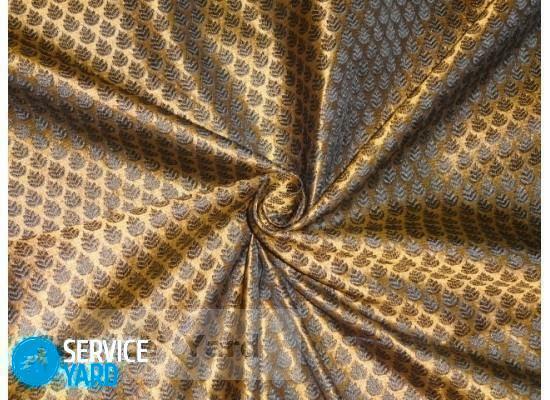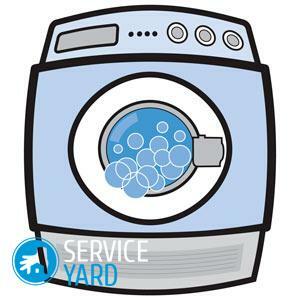At the household level, today more and more often you can hear the discussion, which method is most effective in heating the home. The most common in our environment are considered to be water-heating systems, which are based on the work of the heated coolant. Underfloor heating in this regard is of most interest to consumers. Especially popular is the decision to equip the floor heating in the country houses, cottages and in the country, in an environment where you want to create a high degree of comfort. At this stage, and there is most of the questions, which one to choose consumables for the construction of the heating circuits.

Main article: how to choose the pipes for floor heating?
In each case, there is always an opportunity to make a choice by opting for pipes for warm water floor, made of a particular material. It takes into account not only the cost of the pipe, but also the technological characteristics of the material parameters. From these data it depends not only on the efficiency of the heating system of the future, but also a way of laying. Mounting water circuits is one of the basic steps to create a floor heating. A practical and manufacturable material greatly simplify and speed up pipe laying the prepared coating. Consider the two most common ways to resolve the problem:
- Heated floor of metal;
- floor heating, wherein the polypropylene used water circuit.
Which pipes are used for underfloor heating? Why are more likely to choose metal and plastic and polypropylene?
The pipeline is the main working part of the heating system "warm water floor," so the fact a consumable material will be used, i.e. which pipe goes to work, turns the focus of installation. For the construction of floors of heating is an important quality Consumables, high technological characteristics of the tube. In view of the rapid growth in popularity of water heating, production technology equipment and supplies for heating, stepped far forward.
On the heat market of heating equipment presents the following types of pipe:
- metal and plastic;
- polypropylene;
- copper;
- corrugated pipes, steel;
- Consumables XLPE.
Any of the aforementioned embodiments copes well with the tasks assigned to it. The only thing that distinguishes all variants of each other, cost and performance. On the copper tubes, and the corrugated channel for water circuit talk another time. These materials are not popular at the household level because of high cost.

Now let us consider another question. What is best for your floor, metal and plastic or polypropylene? What is the difference between the most common materials?
Metal-represents one of the materials with which to work, with any qualification. Pipes of plastic pipes quite easy to mount, repair or to replace a damaged areas.
On a note: Metal pipes are very convenient for routing the water mains in autonomous heating systems. Radiator heating method generally mounted using reinforced plastic pipes.
Properly folded water circuit makes floor of metal pipes reliable, practical and durable. Especially impresses the fact that water heating circuits of solid plastic, durable and leak, have a high degree of reliability. Highway connected to the distribution manifold via a comb fittings, which often have a metal substrate. Coupling of the fragments to adapters multilayer pipe is carried by a threaded connection.
For reference: According to experts, unless there are certain skills and dexterity, threaded joints in contact with plastic pipes can give leak.
Floor water pipe made of metal, connected by means of press fittings, have a higher reliability. As a result of the crimping creates a strong and tight connection.

Polypropylene pipes also are connected via fittings. The difference is that coupling is accomplished by heating the tube edges special equipment. By soldering polypropylene tightly connected to the fitting by making a compound of monolithic and reliable.
In order to make a choice in favor of metal and plastic or give preference to polypropylene materials, it is necessary to answer the question. What better polyethylene or plastic, as products are practical in use warm water floors, and what will be the cost of installation of the heating water circuit? The question of costs is often the decisive factor. About mounting difficulties will be known in the course of work. Not the least role in the choice of playing the design features of both materials. What is the difference of consumables?

For water supply and hot water heating systems are perfect both. Due to the low cost of materials can be laid fairly extensive pipelines delivering water and heating the whole house. For underfloor heating the use of plastic pipes carries a certain risk. Putting the heating circuit channel in the concrete floor or under the tile, when leakage occurs, repair work will be fairly extensive and severe. polypropylene tubes In this aspect, more reliable. Given the warm coefficient of expansion, properly folded polypropylene heating circuits will serve long.
The first option - use metalloplastik for underfloor heating
Pipe made of metal - a high-tech product labeling (MP), which is a composite. Five layers form the basis of design, fulfilling their specific functions. The inner and outer layers of polyethylene, tightly connecting the inner layer, made of foil. Between the foil and polyethylene layers are two gluing layer, providing all the necessary structural stability.

At first glance, the channel is a complex structure of a dial - the composite. However, it is such a design is specially designed for underfloor heating. Due to the presence of the metal layer within the channel, there is the maximum possible transfer of thermal energy. Plastic pipes for floor heating can create uniform heating of the floor surface using water when laying contours sufficiently wide step.
On a note: maximum allowable value step laying water loop is 35 cm. By increasing the pitch may cause cold spots in the surface of the floor, i.e. parts of the surface are not exposed to excessive heat.
The inner layer has a smooth wall, which makes such pipes kaltsiynyh stable formation of deposits. Corrosion of such material is not terrible. The combination of aluminum foil and polyethylene entire contour provides the necessary strength, without yielding strength of the copper pipes. This consumable is, as its obvious advantages and disadvantages. However, for several reasons, namely MT-pipe often chosen for the installation of warm water floor.
Heated floor, in which plastic pipes are used, has the following advantages:
- conduit of metal has a low coefficient of expansion, which beneficially affects the concrete screed condition;
- water circuits are resistant to corrosion and inert in terms of response to exposure to chemicals;
- water heating loop well keep working coolant pressure;
- heating circuits of this material have high sound insulation;
- pipe keeps its shape during the pouring the concrete surface.
The latter benefits that affect the choice of this type of consumables, durability concerns. Pipes laid in the concrete floor, can function normally for 30-40 years.
Metal-working pressure up to 10 atmospheres and retain their essential technological characteristics at a temperature of coolant 950FROM. From the viewpoint of practicality and workability, plastic tubes behave perfectly during assembly of the heating circuits. The channel is easily bent, which makes it possible to stack circuit in any way, serpentine or spiral patterns in which a large number of bends provided.

Disadvantages of metal and plastic are more nuanced use of technological pipelines made of this material. This could include the following:
- with poor workmanship may be a layer of aluminum and polyethylene bundle (difference in the linear expansion coefficients of the parameters);
- use of fittings for metal compounds may lead to the formation of seats in the inner surface scum compound;
- perezhim fitting during installation of the pipeline can result in the formation of cracks in the polyethylene;
Metal-plastic and floor heating in your home - a good combination, reasonable, adequate, and reasonable choice. In this case, you can get the reliability and efficiency of the heating system, thus saving a considerable sum on supplies. So you can safely proceed to the calculations of the flow pipes needed for the installation of the heating circuits.
Pipeline XLPE
Water circuit made by using pipes made of crosslinked polyethylene the second most frequently used option laying underfloor. Crosslinked polyethylene is the polymer subjected to further processing. Under the influence of high pressure in the structure of the polymers formed new molecular bonds. Such a process in terms of technology called seaming, consequently, a new material was naming - crosslinked polyethylene.
The three-dimensional molecular structure increases the stability of all the material, making it inert to high temperatures. This means that the linear expansion coefficient of the pipe XLPE lower percentage as a result of deformation. The resulting structure did not react to light mechanical action. Scratches, erasing and shrinkage for such pipes are not absolutely terrible.

When choosing your sex tube, pay attention to the indicator of the degree of crosslinking, it is this parameter is the key to performance of all heating circuits in the future. There is a standard for the degree of crosslinking, which varies in the range 65-80%.
In terms of technology, today released three types of pipes from cross-linked polyethylene, different cross-linking method.
- REX-a or piroksidny method;
- REX-b silane or method;
- REX-c radiation method of crosslinking.
In the first case introduced peroxides, bringing the degree of crosslinking of maximum 85% of the polymer. In the second case it is filled polyethylene organic silanidami. This material crosslinking degree reaches 65%.
Last third way of crosslinking, radiation crosslinking provides a degree of 60%.
On a note: less than the degree of crosslinking, the lower the rigidity and strength of polyethylene. Too small percentage of the degree of crosslinking may lead in the future to unpleasant consequences. Pipes with such parameters over time may crack and lose tightness.
conclusion
Finally I say this. And the first option, and the second has the right to life. Metal-plastic and crosslinked polyethylene - modern high-tech materials. With the right thermal and hydraulic calculations, equipped with floor heating water circuit of the metal-plastic or plastic pipes will be long and reliably.
The price of these supplies now allows you to make them accessible to most consumers. These materials can be successfully pave the heating system throughout the house, using a minimum of connections and avoid unnecessary pieces.



